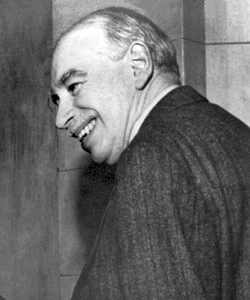I wouldn't have done it were the options just limited to the iPhone, Blackberry, and a few high-end Android devices from HTC and Motorola, which would have cost me anywhere from 25,000 pesos up (open line). But late last year, Chinese electronics firm Huawei (the low-profile manufacturer of the 3G USB modems many of you use) introduced the Ideos U8150 to the market, a full-featured Android 2.2 (Froyo) Smartphone which, at around 7,000 pesos (here in Hong Kong and most probably also in Greenhills) and with very good reviews, then offered the best value for money.
Then came the Samsung Galaxy Mini S5570 about a month ago, the phone I eventually bought. Like the Ideos, it also comes with Android 2.2, but for less than 1,000 pesos more (I bough mine here for around 7,600 pesos) you also get customized Samsung features and a better-looking and better-made phone.
To get the most out of your smartphone, you'll need constant wireless Internet access, either via Wi-Fi or 3G. In the Philippines, unlimited mobile Internet plans are available from any of the major telco players at (somewhat) reasonable prices.
2. GPS + Google Maps
This is actually the primary reason why I decided to upgrade to a smartphone: I was looking for an inexpensive location/navigation system that I could use whenever I explore the city or go biking in unfamiliar places. My phone's GPS capability and the Google Maps application (or the free MapDroyd app if you don't have mobile Internet access) actually works splendidly: whenever I go biking, I have the phone mounted on my bike so I could navigate without having to stop.
3. Fitness trackers
With these applications and your phone's GPS receiver, you can track your physical activities (like walking, running, hiking, and biking) and instantly upload and share your activity details to your friends as soon as you're done.
You can choose from any one of these two fitness tracking apps. The first, and most popular, is Google's MyTracks. My only issue with this application, good as it is, is that it cannot be linked to your Facebook account, a "minor" deficiency that RunKeeper adequately addresses.
4. Google Places
Google Places is not so much a standalone app but an extension of Google Maps; it uses your GPS location to provide you with helpful information about "places" around you. For example, it can show you not only the names and locations of restaurants that are nearby, but also user-generated reviews and ratings that you can use in choosing which one to visit.
5. Free anywhere instant multimedia messaging
It's for those who want to be connected with their friends anywhere, anytime. The simplest way to do it is with Meebo messenger mobile app, with which you log on to your multiple IM accounts, like Yahoo! Messenger, Gtalk, MSN, AOL, and others. Or, you can go by way of WhatsApp, which lets you send messages, photos, and videos across all mobile platforms (like Android, iOS, Blackberry, and Symbian) for free. Sending messages and files in itself is not much different from what you can do with Meebo and other messaging platforms, but the reason why my friends go crazy over this service, and what sets it apart from standard IM fare, is that it lets you form groups to which you can broadcast and from which you can receive all kinds of stuff. Believe me, it can get pretty crazy once the group messages and pics get started.
6. Mobile Internet browsing
One would think that smartphone browsing, with tiny 3- to 4-inch screen sizes, would be pretty cumbersome and eye-straining. But with many popular websites featuring mobile-friendly versions (ahem), and modern mobile browsers like Opera Mini, mobile Internet surfing has now become quite a pleasant experience.
7. Free applications
We have all heard Steve Jobs say "There's an app for that" to Apple's iPhone and iPad customers; fortunately for the budget conscious, increasingly the same can now be said of the Android mobile environment. And no, I'm not even talking about Angry Birds or Fruit Ninja, although those who are interested in these kinds of games would be easily satisfied by the diverse offerings at the Android Marketplace. Apart from the apps I already mentioned above, here are a few others that are fast becoming indispensable to me.
- Mango. Access your favorite manga from the cloud.
- Bloomberg. Check the status of your portfolio and your stock watch list anywhere you go (works with Philippine stocks, UITFs, and mutual funds).
- Evernote. Write, store, and organize your notes on the fly.
- Google Skymap. Stargazing at its coolest.


















